#30 in Vietnam
Cao Lầu: Basic Information
Pronunciation
Alternative Name(s)
Dish Type
Course
Mealtime
Popular Variations
Cao Lầu: Ingredients and Preparation
Main Ingredients
Main Cooking Method
Preparation Process
- Boiling the rice noodles
- Preparing the pork bone broth (optional)
- Marinating the pork and then braising or frying it
- Assembling cao lầu
Cao Lầu: A Deep Dive
Cultural Significance
Taste
Texture
Aroma
Color
Serving Style
Serving Temperature
Accompaniment
Occasions
Seasons
Special Diets
Calories
Popularity
Popular Similar Dishes
- Mì Quảng
- Udon
Popular Dining Area
Cao lầu is a traditional Vietnamese noodle dish native to Hoi An, a famous city in Quang Nam Province, Central Vietnam.
It is a combination of dishes from various Asian cuisines and prepared exclusively with local ingredients, making it a distinct local delicacy.
Read on, and you will discover many wonderful facts about this noodle dish, such as its history and main ingredients.
I will also go into the upsides and downsides of eating cao lầu and suggest popular eateries for eating it in Hoi An. Lastly, I will answer popular questions about cao lầu and recommend similar dishes.
Key Points
Cao Lầu Images
What Is the History of Cao Lầu?
Cao lầu emerged in the 17th century when Hoi An was a bustling trade city. Many Chinese and Japanese merchants resided in the city, bringing with them recipes from their home countries. The mingling of Chinese and Japanese cooking with local ingredients eventually resulted in cao lầu.
This name is literally “high story,” as people usually enjoyed it at the upper story of a house or eatery in the past. Today, cao lầu is savored in more kinds of settings, from roadside food stalls to sit-down restaurants.
A reason behind the enduring popularity of cao lầu is the use of local ingredients, which distinguishes it from many other Vietnamese noodle dishes.
What Is Cao Lầu Made of?
Traditional cao lầu has the following 5 ingredients:
| ingredients | Description |
|---|---|
| Rice noodles | Made from rice flour soaked in lye water Have a chewy, springy texture and a yellow or grayish-brown color The lye water should be made from the ashes of plants harvested from the nearby Cham Islands Use water taken from the ancient Ba Le well within Hoi An Can be cut into squares and deep-fried to add to the finished dish |
| Pork | Marinated in five-spice powder, soy sauce, and various condiments like char siu (Cantonese pork BBQ) Braised until flavorful Sometimes replaced with shrimp |
| Broth | Cao lầu only uses a small amount of broth The traditional version uses the viscous juice from the braised pork The modern version sometimes features pork bone broth |
| Herbs and greens | Bean sprouts, lettuce, perilla, lemon basil, cilantro, Vietnamese coriander, cilantro, water mint, mustard greens, common knotgrass, heartleaf, chrysanthemum greens Often sourced from the nearby Tra Que village |
| Add-ons | Deep-fried cao lầu noodle squares, deep-fried pork rinds, chili peppers |
The use of local ingredients is a huge plus for cao lầu, but it also poses several challenges.
Pros and Cons of Eating Cao Lầu
Cao lầu has the following advantages and disadvantages.
Pros
Cons
To help you overcome the challenge of finding suitable places to try cao lầu, I will give some recommendations on the best cao lầu destinations in Hoi An.
Where to Try Cao Lầu in Hoi An?
Visit the following 4 eateries for the best cao lầu experience:
In Hoi An
Cao lầu Bá Lễ
Address: 45/3 Tran Hung Dao Street, Minh An Ward, Hoi An City, Quang Nam province
Opening hours: 11 AM – 9:30 PM on weekdays, 7:30 AM – 9:30 PM on weekends
Cao lầu Không Gian Xanh
Address: 687 Hai Ba Trung Street, Minh An Ward, Hoi An City, Quang Nam province
Opening hours: 8 AM – 8:30 PM every day
Cao lầu Thanh
Address: 26 Thai Phien Street, Minh An Ward, Hoi An City, Quang Nam province
Opening hours: 7 AM – 7 PM every day
Cao lầu Hội An Trung Bắc
Address: 87 Tran Phu Street, Minh An Ward, Hoi An City, Quang Nam province
Opening hours: 9 AM – 9 PM every day
Do you still have questions about cao lầu? Check out the FAQs section to put them to rest once and for all.



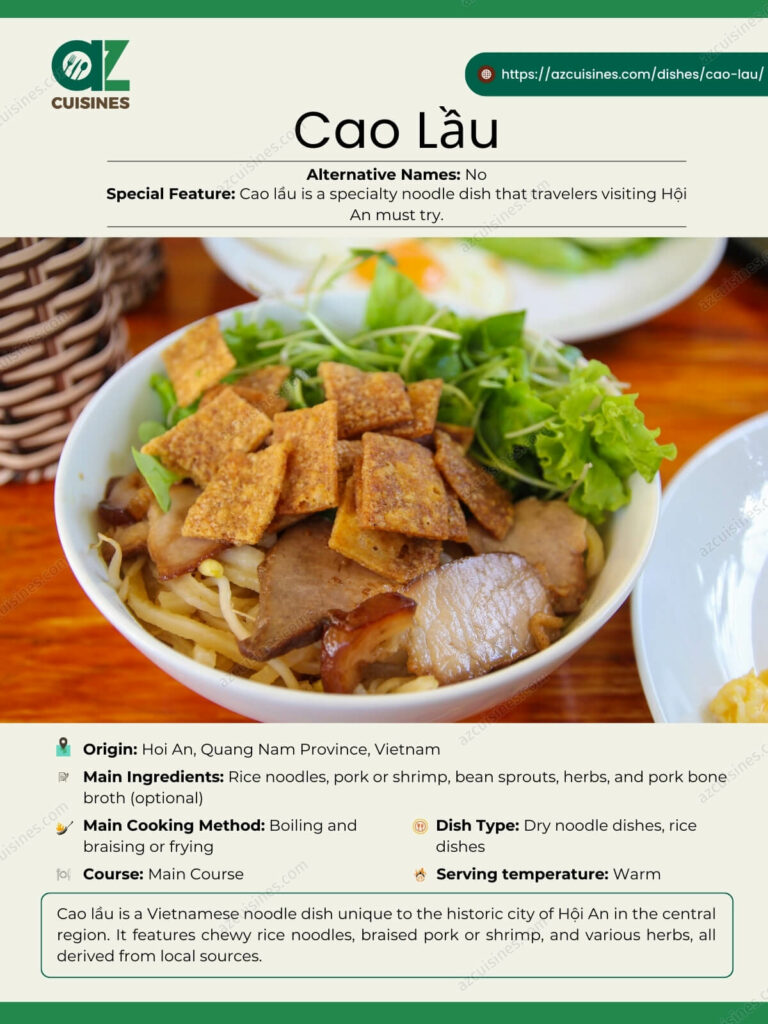
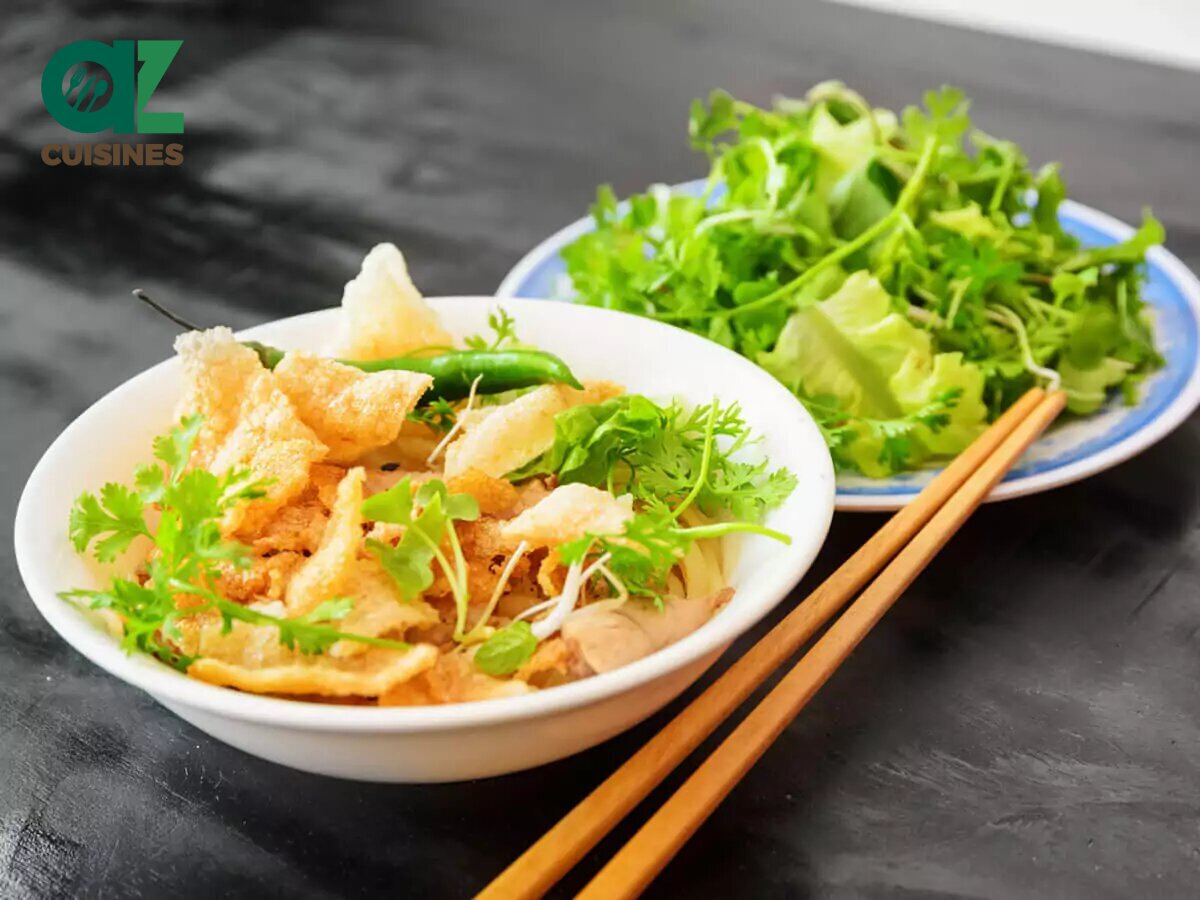
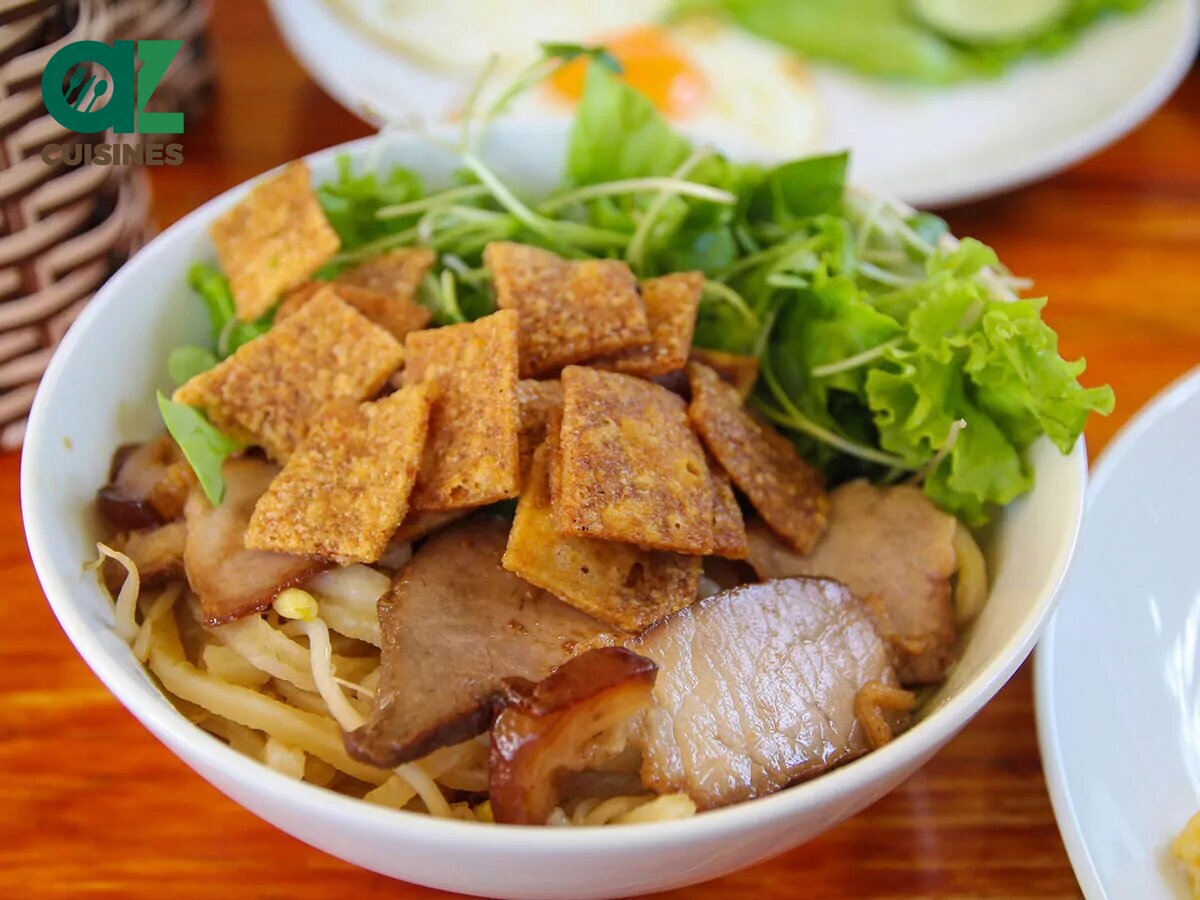
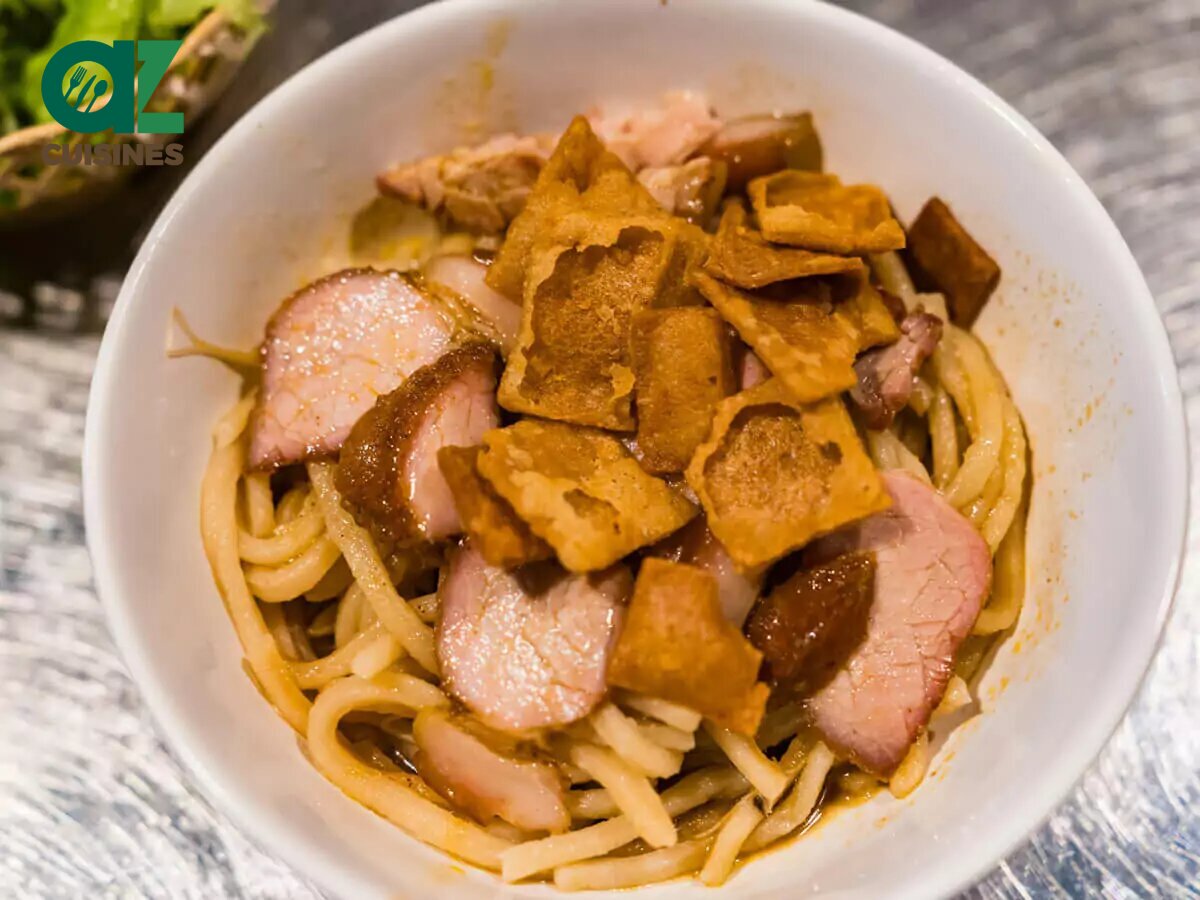
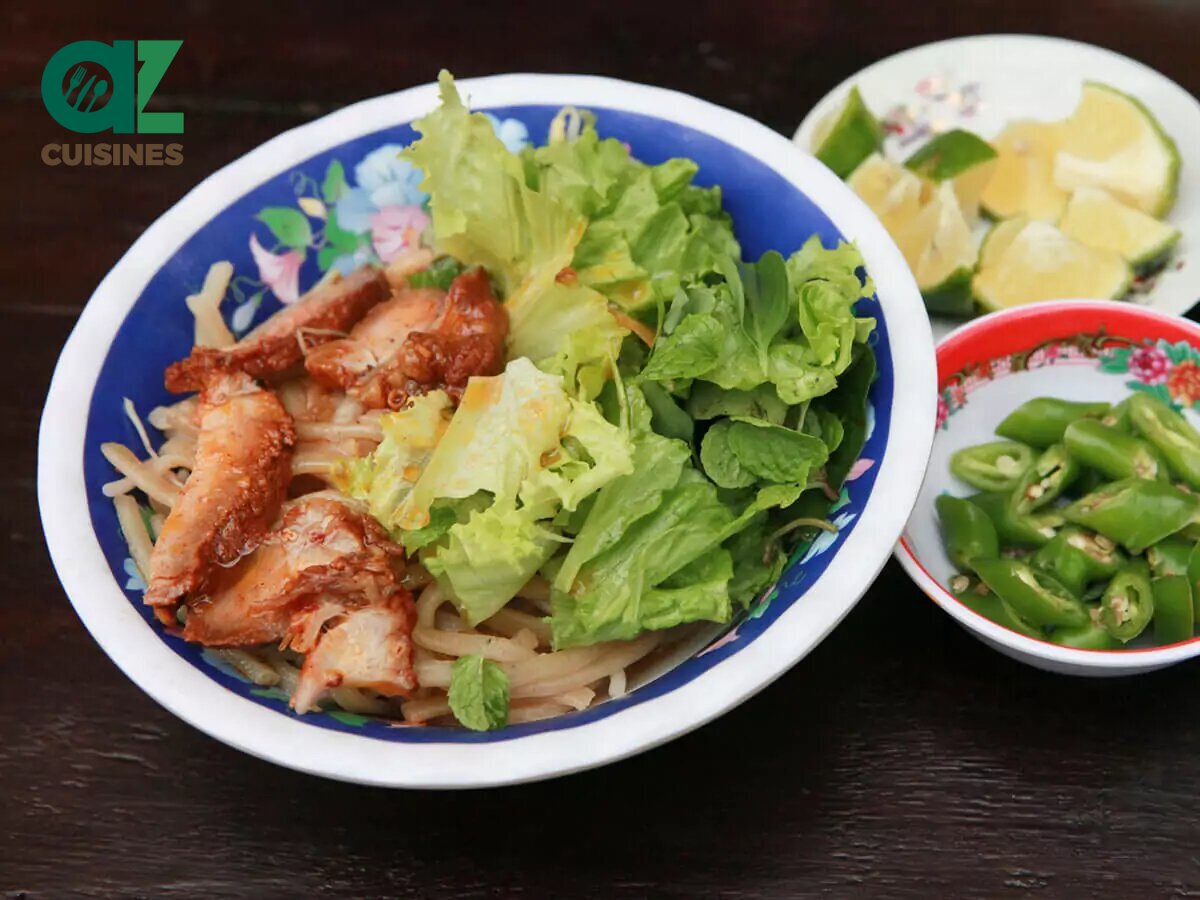
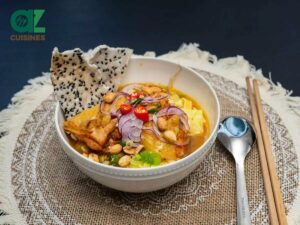
Truc Tran (Kris)
Senior Food Editor
Expertise
Home Cooking, Meal Planning, Recipe Development, Baking and Pastry, Food Editor, Cooking-video Maker, Vietnamese Food Evaluation Expert
Education
Truc Tran (Kris), an experienced food writer and editor, is great at exploring and describing global cuisines, from simple street food to fancy dining. In her writing, she skillfully mixes different flavors, cooking methods, and culinary traditions, showing the unique character of various cultures through their food and drinks. On azcuisines.com, Kris highlights her knowledge, especially in Asian cuisine and worldwide traditional dishes.